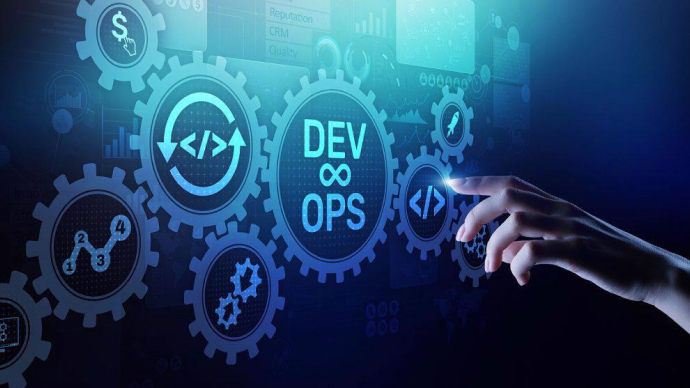
AWS Certified Machine Learning - Specialty: AWS Certified Machine Learning - Specialty (MLS-C01)
PDFs and exam guides are not so efficient, right? Prepare for your Amazon examination with our training course. The AWS Certified Machine Learning - Specialty course contains a complete batch of videos that will provide you with profound and thorough knowledge related to Amazon certification exam. Pass the Amazon AWS Certified Machine Learning - Specialty test with flying colors.

Curriculum for AWS Certified Machine Learning - Specialty Certification Video Course
| Name of Video | Time |
|---|---|
 1. Course Introduction: What to Expect |
6:00 |
| Name of Video | Time |
|---|---|
 1. Section Intro: Data Engineering |
1:00 |
 2. Amazon S3 - Overview |
5:00 |
 3. Amazon S3 - Storage Tiers & Lifecycle Rules |
4:00 |
 4. Amazon S3 Security |
8:00 |
 5. Kinesis Data Streams & Kinesis Data Firehose |
9:00 |
 6. Lab 1.1 - Kinesis Data Firehose |
6:00 |
 7. Kinesis Data Analytics |
4:00 |
 8. Lab 1.2 - Kinesis Data Analytics |
7:00 |
 9. Kinesis Video Streams |
3:00 |
 10. Kinesis ML Summary |
1:00 |
 11. Glue Data Catalog & Crawlers |
3:00 |
 12. Lab 1.3 - Glue Data Catalog |
4:00 |
 13. Glue ETL |
2:00 |
 14. Lab 1.4 - Glue ETL |
6:00 |
 15. Lab 1.5 - Athena |
1:00 |
 16. Lab 1 - Cleanup |
2:00 |
 17. AWS Data Stores in Machine Learning |
3:00 |
 18. AWS Data Pipelines |
3:00 |
 19. AWS Batch |
2:00 |
 20. AWS DMS - Database Migration Services |
2:00 |
 21. AWS Step Functions |
3:00 |
 22. Full Data Engineering Pipelines |
5:00 |
| Name of Video | Time |
|---|---|
 1. Section Intro: Data Analysis |
1:00 |
 2. Python in Data Science and Machine Learning |
12:00 |
 3. Example: Preparing Data for Machine Learning in a Jupyter Notebook. |
10:00 |
 4. Types of Data |
5:00 |
 5. Data Distributions |
6:00 |
 6. Time Series: Trends and Seasonality |
4:00 |
 7. Introduction to Amazon Athena |
5:00 |
 8. Overview of Amazon Quicksight |
6:00 |
 9. Types of Visualizations, and When to Use Them. |
5:00 |
 10. Elastic MapReduce (EMR) and Hadoop Overview |
7:00 |
 11. Apache Spark on EMR |
10:00 |
 12. EMR Notebooks, Security, and Instance Types |
4:00 |
 13. Feature Engineering and the Curse of Dimensionality |
7:00 |
 14. Imputing Missing Data |
8:00 |
 15. Dealing with Unbalanced Data |
6:00 |
 16. Handling Outliers |
9:00 |
 17. Binning, Transforming, Encoding, Scaling, and Shuffling |
8:00 |
 18. Amazon SageMaker Ground Truth and Label Generation |
4:00 |
 19. Lab: Preparing Data for TF-IDF with Spark and EMR, Part 1 |
6:00 |
 20. Lab: Preparing Data for TF-IDF with Spark and EMR, Part 2 |
10:00 |
 21. Lab: Preparing Data for TF-IDF with Spark and EMR, Part 3 |
14:00 |
| Name of Video | Time |
|---|---|
 1. Section Intro: Modeling |
2:00 |
 2. Introduction to Deep Learning |
9:00 |
 3. Convolutional Neural Networks |
12:00 |
 4. Recurrent Neural Networks |
11:00 |
 5. Deep Learning on EC2 and EMR |
2:00 |
 6. Tuning Neural Networks |
5:00 |
 7. Regularization Techniques for Neural Networks (Dropout, Early Stopping) |
7:00 |
 8. Grief with Gradients: The Vanishing Gradient problem |
4:00 |
 9. L1 and L2 Regularization |
3:00 |
 10. The Confusion Matrix |
6:00 |
 11. Precision, Recall, F1, AUC, and more |
7:00 |
 12. Ensemble Methods: Bagging and Boosting |
4:00 |
 13. Introducing Amazon SageMaker |
8:00 |
 14. Linear Learner in SageMaker |
5:00 |
 15. XGBoost in SageMaker |
3:00 |
 16. Seq2Seq in SageMaker |
5:00 |
 17. DeepAR in SageMaker |
4:00 |
 18. BlazingText in SageMaker |
5:00 |
 19. Object2Vec in SageMaker |
5:00 |
 20. Object Detection in SageMaker |
4:00 |
 21. Image Classification in SageMaker |
4:00 |
 22. Semantic Segmentation in SageMaker |
4:00 |
 23. Random Cut Forest in SageMaker |
3:00 |
 24. Neural Topic Model in SageMaker |
3:00 |
 25. Latent Dirichlet Allocation (LDA) in SageMaker |
3:00 |
 26. K-Nearest-Neighbors (KNN) in SageMaker |
3:00 |
 27. K-Means Clustering in SageMaker |
5:00 |
 28. Principal Component Analysis (PCA) in SageMaker |
3:00 |
 29. Factorization Machines in SageMaker |
4:00 |
 30. IP Insights in SageMaker |
3:00 |
 31. Reinforcement Learning in SageMaker |
12:00 |
 32. Automatic Model Tuning |
6:00 |
 33. Apache Spark with SageMaker |
3:00 |
 34. Amazon Comprehend |
6:00 |
 35. Amazon Translate |
2:00 |
 36. Amazon Transcribe |
4:00 |
 37. Amazon Polly |
6:00 |
 38. Amazon Rekognition |
7:00 |
 39. Amazon Forecast |
2:00 |
 40. Amazon Lex |
3:00 |
 41. The Best of the Rest: Other High-Level AWS Machine Learning Services |
3:00 |
 42. Putting them All Together |
2:00 |
 43. Lab: Tuning a Convolutional Neural Network on EC2, Part 1 |
9:00 |
 44. Lab: Tuning a Convolutional Neural Network on EC2, Part 2 |
9:00 |
 45. Lab: Tuning a Convolutional Neural Network on EC2, Part 3 |
6:00 |
| Name of Video | Time |
|---|---|
 1. Section Intro: Machine Learning Implementation and Operations |
1:00 |
 2. SageMaker's Inner Details and Production Variants |
11:00 |
 3. SageMaker On the Edge: SageMaker Neo and IoT Greengrass |
4:00 |
 4. SageMaker Security: Encryption at Rest and In Transit |
5:00 |
 5. SageMaker Security: VPC's, IAM, Logging, and Monitoring |
4:00 |
 6. SageMaker Resource Management: Instance Types and Spot Training |
4:00 |
 7. SageMaker Resource Management: Elastic Inference, Automatic Scaling, AZ's |
5:00 |
 8. SageMaker Inference Pipelines |
2:00 |
 9. Lab: Tuning, Deploying, and Predicting with Tensorflow on SageMaker - Part 1 |
5:00 |
 10. Lab: Tuning, Deploying, and Predicting with Tensorflow on SageMaker - Part 2 |
11:00 |
 11. Lab: Tuning, Deploying, and Predicting with Tensorflow on SageMaker - Part 3 |
12:00 |
| Name of Video | Time |
|---|---|
 1. Section Intro: Wrapping Up |
1:00 |
 2. More Preparation Resources |
6:00 |
 3. Test-Taking Strategies, and What to Expect |
10:00 |
 4. You Made It! |
1:00 |
 5. Save 50% on your AWS Exam Cost! |
2:00 |
 6. Get an Extra 30 Minutes on your AWS Exam - Non Native English Speakers only |
1:00 |
Amazon AWS Certified Machine Learning - Specialty Exam Dumps, Practice Test Questions
100% Latest & Updated Amazon AWS Certified Machine Learning - Specialty Practice Test Questions, Exam Dumps & Verified Answers!
30 Days Free Updates, Instant Download!
AWS Certified Machine Learning - Specialty Premium Bundle

- Premium File: 370 Questions & Answers. Last update: Dec 3, 2025
- Training Course: 106 Video Lectures
- Study Guide: 275 Pages
- Latest Questions
- 100% Accurate Answers
- Fast Exam Updates
Amazon AWS Certified Machine Learning - Specialty Training Course
Want verified and proven knowledge for AWS Certified Machine Learning - Specialty (MLS-C01)? Believe it's easy when you have ExamSnap's AWS Certified Machine Learning - Specialty (MLS-C01) certification video training course by your side which along with our Amazon AWS Certified Machine Learning - Specialty Exam Dumps & Practice Test questions provide a complete solution to pass your exam Read More.
Complete AWS Certified Machine Learning – Specialty Course: From Basics to Advanced AI
Preparing for the AWS Certified Machine Learning - Specialty exam is one of the most rewarding challenges for anyone working in data science, artificial intelligence, or cloud computing. Unlike entry-level certifications that mainly test your familiarity with AWS services, this advanced credential dives into the integration of machine learning theory with Amazon Web Services tools, especially SageMaker and its supporting ecosystem. Passing this exam requires an understanding of both the concepts behind feature engineering, deep learning, generative AI, and the way AWS provides high-level services such as Rekognition, Comprehend, and Translate to accelerate real-world applications.
The certification is not simply about memorizing services and syntax; it is about demonstrating the ability to design, implement, and operate machine learning workloads on AWS at scale. We will walk through the essentials of the certification, the structure of learning, and the expectations you should have as a candidate preparing for it.
What you will learn from this course
The overall exam scope for the AWS Certified Machine Learning - Specialty
How to work with Amazon SageMaker built-in algorithms such as XGBoost, BlazingText, Object Detection, and more
Feature engineering processes including handling outliers, imputing missing data, binning values, transformations, encoding, and normalization
Using AWS’s managed machine learning services such as Translate, Comprehend, Polly, Rekognition, Lex, and Transcribe for rapid deployment of AI functionality
Building and managing data engineering pipelines with AWS Glue, Kinesis, DynamoDB, and S3 data lakes
Leveraging Apache Spark, EMR, Athena, and scikit-learn for exploratory data analysis and large-scale processing
Understanding and applying deep learning basics, hyperparameter optimization, and avoiding overfitting through regularization
Conducting automatic model tuning, debugging, and operational monitoring with SageMaker Autopilot, Debugger, and Model Monitor
Learning about transformer architectures and generative AI systems including LLMs, GPT-based models, and AWS Bedrock
Securing machine learning workflows and applying AWS security best practices throughout ML pipelines
Learning objectives
The main objective of this course is to prepare you not only to pass the AWS Certified Machine Learning - Specialty exam but to also gain practical experience with real-world machine learning problems on AWS. By the end of the learning journey, you should be able to:
Design scalable data pipelines on AWS for machine learning workloads
Build, train, and deploy machine learning models on Amazon SageMaker using both built-in algorithms and custom code
Evaluate model performance using precision, recall, F1 scores, and confusion matrices
Perform feature selection and transformation techniques to maximize model performance
Integrate deep learning models into the AWS ecosystem, leveraging GPU resources where appropriate
Utilize AWS’s high-level ML APIs for natural language processing, computer vision, and speech recognition tasks
Implement generative AI use cases with Bedrock, JumpStart, and SageMaker Foundation Models
Understand best practices for monitoring, debugging, and automating ML operations in production
Enforce secure practices across data ingestion, storage, and modeling pipelines to meet enterprise-level compliance requirements
Target Audience
The AWS Certified Machine Learning - Specialty exam is not meant for complete beginners. It is best suited for:
Data scientists who want to expand their expertise into cloud-native ML systems and gain AWS certification credibility
Machine learning engineers responsible for productionizing models in AWS environments
Developers who want to build applications enhanced with machine learning or generative AI without managing heavy infrastructure
Data engineers seeking to connect data pipelines to machine learning workloads and integrate preprocessing with Glue, Kinesis, and DynamoDB
AI researchers looking to operationalize their models using scalable, serverless, or managed AWS services
Technical leads, solution architects, and consultants who need to design ML-driven solutions for clients or enterprises
Professionals aiming to advance their careers with one of the most challenging AWS certifications available
Requirements
To make the most of this learning path and exam preparation, candidates will need:
An AWS account with access to SageMaker, S3, Glue, EMR, and other related services for hands-on practice
Familiarity with at least one programming language, with Python strongly recommended given its dominance in machine learning frameworks
Access to Jupyter notebooks, either through SageMaker Studio or local setups, to run experiments and tests
Commitment to practicing real-world problems through labs and case studies rather than relying on theory alone
Willingness to study both machine learning theory and AWS-specific implementation details, as the exam evaluates both aspects equally
Prerequisites
Before enrolling in a preparation course or starting your self-study plan, it is advised that candidates have:
Associate-level AWS certification knowledge, ideally the Solutions Architect Associate or Developer Associate, to ensure familiarity with IAM, EC2, S3, and VPCs
Foundational knowledge of machine learning concepts including supervised vs unsupervised learning, overfitting, regularization, and evaluation metrics
Some exposure to deep learning, neural networks, and common frameworks such as TensorFlow, PyTorch, or MXNet
Experience working with structured and unstructured data, along with preprocessing methods such as normalization, encoding, and data augmentation
Understanding of distributed systems concepts, as Spark and EMR are part of the syllabus for handling large-scale datasets
Understanding the AWS Certified Machine Learning - Specialty Exam
The AWS Certified Machine Learning - Specialty certification exam, currently MLS-C01, is structured around four primary domains: data engineering, exploratory data analysis, modeling, and machine learning implementation and operations. Each domain represents a crucial stage in the machine learning lifecycle. Passing the exam requires balanced expertise across all four.
Data engineering covers topics such as designing data storage solutions in S3, implementing ETL with AWS Glue, streaming data with Kinesis, and using DynamoDB for serving features at scale. Exploratory data analysis involves techniques for understanding the dataset, selecting features, and running statistical evaluations using services like Athena, scikit-learn, or Spark. Modeling emphasizes building, training, and optimizing machine learning models using SageMaker, including tuning hyperparameters and addressing overfitting. Finally, implementation and operations evaluate your ability to deploy, monitor, secure, and automate ML pipelines with AWS-native services.
The exam format is multiple-choice and multiple-response, with a mix of scenario-based questions that often require identifying the most cost-efficient or scalable solution in an AWS context.
Deep Dive into Amazon SageMaker
Amazon SageMaker is the centerpiece of this certification. It is not only a managed service for training and deploying models but also an integrated environment for data preparation, feature engineering, debugging, and monitoring. The exam expects familiarity with SageMaker Studio, built-in algorithms like XGBoost and BlazingText, and capabilities like Autopilot for automatic model tuning.
You will also need to understand advanced features such as SageMaker Model Monitor for drift detection, Debugger for identifying training issues, and JumpStart for deploying pre-trained foundation models. The ability to integrate SageMaker with surrounding services like S3, Glue, and Kinesis is crucial, as real-world solutions rarely operate in isolation.
Hands-on experience with SageMaker is essential. Simply reading documentation is not enough; you must practice launching training jobs, monitoring metrics, tuning hyperparameters, and deploying endpoints for inference.
Generative AI and the Future of AWS Machine Learning
One of the latest areas added to the AWS ecosystem is generative AI, particularly through services such as Bedrock. This enables developers and ML engineers to build applications powered by foundation models without requiring massive GPU clusters or advanced infrastructure.
Bedrock, SageMaker, JumpStart, and CodeWhisperer represent a shift in the way AWS is empowering users to leverage large language models and transformer-based architectures. For the exam, you should be familiar with how transformers work, including the concept of self-attention and masked attention, as well as the practical applications of these architectures in tasks such as translation, summarization, and conversational agents.
While generative AI may not dominate the current exam, its inclusion is expanding as enterprises adopt LLM-driven solutions at scale. Understanding how to deploy and monitor such models securely and cost-effectively is becoming increasingly important.
Data Engineering Foundations on AWS
A critical part of the certification involves demonstrating your ability to design and manage scalable data pipelines. S3 remains the foundation for building data lakes, while Glue provides the ETL capabilities needed for cleaning and transforming datasets. Kinesis plays a role in real-time ingestion of data streams, whether from IoT devices, clickstream logs, or video feeds. DynamoDB often appears in exam scenarios involving low-latency lookups for serving features to machine learning models.
Candidates must understand how these services integrate, how data flows through them, and what the trade-offs are between cost, latency, and scalability. The exam scenarios often test not only your technical knowledge but also your ability to choose the most efficient architecture under specific constraints.
Exploratory Data Analysis Tools
Exploratory data analysis is where raw data begins to reveal its patterns. On AWS, tools like Athena and QuickSight allow for SQL-style querying and visualization directly from S3 data lakes. EMR and Spark provide distributed computing power for large-scale data analysis, while scikit-learn remains a go-to library for traditional data exploration and feature preparation.
Being able to apply techniques such as normalization, encoding, and handling missing values is key. Equally important is the ability to interpret the output, such as understanding when outliers should be removed or transformed and when data imbalance requires specific sampling techniques. The exam expects not just tool knowledge but the reasoning behind feature selection and transformation choices.
Modeling and Regularization
Once data is prepared, building models becomes the focus. SageMaker provides access to built-in algorithms, pre-trained models, and frameworks like TensorFlow and PyTorch. Candidates must understand not only how to train these models but also how to optimize them.
Hyperparameter tuning is a recurring theme, and services like SageMaker’s automatic model tuning make it easier to explore parameter space. Avoiding overfitting is another critical skill, often addressed with techniques such as dropout, early stopping, and regularization methods like L1 and L2. Understanding these techniques both conceptually and practically is important for success in the exam.
Beyond the basics, candidates should also understand how to choose the right algorithm for the problem at hand. For example, XGBoost is frequently used for tabular data classification and regression tasks, while BlazingText is effective for natural language processing. DeepAR is suitable for time-series forecasting, and Object Detection is applied to image-based use cases. Knowing the strengths and limitations of these algorithms, as well as the data formats they expect, is essential.
Another important consideration is distributed training. For large datasets or deep learning workloads, SageMaker allows you to scale training across multiple GPU or CPU instances. This requires understanding data parallelism, parameter servers, and strategies for reducing training time without compromising accuracy.
Finally, candidates should be familiar with model evaluation. Metrics such as precision, recall, F1-score, and AUC are not only part of exam questions but also critical in real-world decision-making. A model that performs well in offline training may fail in production if the wrong evaluation metric is optimized. Balancing these aspects ensures that models are both technically sound and aligned with business objectives.
Machine Learning Implementation and Operations
Building a model is not enough; it has to be deployed, monitored, and maintained. SageMaker Model Monitor ensures that predictions remain consistent with expectations over time, detecting drift when incoming data distributions change. SageMaker Debugger helps catch errors during training, such as vanishing gradients or resource bottlenecks.
Operations also involve scaling endpoints for cost efficiency, integrating with Step Functions for orchestration, and ensuring security best practices with IAM roles, encryption, and network isolation. The exam will challenge you with scenarios where cost, security, and performance trade-offs must be balanced.
In production environments, automation is often the key to maintaining reliability. Services such as AWS Batch allow you to schedule and execute large training jobs without manual intervention, while Step Functions coordinate complex workflows across multiple AWS services. Continuous integration and deployment pipelines can be connected to SageMaker, ensuring that new versions of models are tested and rolled out smoothly.
Another important aspect of operations is logging and observability. CloudWatch plays a central role in tracking metrics, creating alarms, and providing dashboards for real-time visibility into model behavior. Combining CloudWatch with CloudTrail enables teams to maintain compliance, audit changes, and investigate issues efficiently.
Scalability is also critical. Some applications require low-latency, high-throughput endpoints, while others may use asynchronous inference or batch transform jobs to reduce costs. Knowing when to use each approach is vital both in practice and on the exam.
By mastering these operational considerations, you demonstrate not only technical skill but also the ability to deliver sustainable, production-ready machine learning solutions in AWS environments.
Course Modules/Sections
The preparation journey is structured around modules that reflect both the exam blueprint and the actual lifecycle of machine learning projects on AWS. Each module addresses specific skills while providing practical exercises and case studies to reinforce learning.
Module 1: Introduction to the AWS Certified Machine Learning - Specialty Exam
This section introduces the exam objectives, structure, scoring system, and the four domains covered. It sets expectations for the level of knowledge required and offers guidance on how to approach the exam strategically. Candidates gain clarity on how data engineering, exploratory data analysis, modeling, and machine learning implementation interact with one another throughout the certification.
Module 2: Data Engineering with AWS Services
Here you will dive into building and managing large-scale data pipelines. Key services include Amazon S3 for data lakes, AWS Glue for ETL operations, Kinesis for real-time data ingestion, and DynamoDB for storing and serving features to machine learning models. This module also addresses scalability trade-offs, batch versus stream processing, and best practices for managing structured and unstructured datasets.
Module 3: Exploratory Data Analysis and Feature Engineering
This section covers methods for preparing raw data for modeling. Techniques include imputing missing values, detecting and handling outliers, applying binning, normalizing distributions, and encoding categorical variables. Hands-on exercises use scikit-learn, Athena, EMR, and Spark MLlib. Visualization and statistical analysis tools such as QuickSight and Pandas are also highlighted.
Module 4: Modeling with Amazon SageMaker
This module is the heart of the course. It covers SageMaker built-in algorithms like XGBoost, BlazingText, and Object Detection, along with deep learning frameworks such as TensorFlow and PyTorch. You will learn hyperparameter tuning, model optimization, and overfitting avoidance using L1 and L2 regularization. Deployment strategies, from single endpoint models to large-scale inference pipelines, are also covered in detail.
Module 5: Deep Learning and Generative AI
This section explores transformer architectures, masked self-attention, GPT models, and practical applications of generative AI. You will experiment with AWS Bedrock, SageMaker JumpStart, and SageMaker Foundation Models to deploy large language models without requiring dedicated GPU clusters. Examples include text summarization, chatbot design, and image generation.
Module 6: Machine Learning Operations on AWS
This module focuses on productionizing models. Key services include SageMaker Model Monitor for drift detection, Debugger for training error analysis, and Autopilot for automated model building. Integration with Step Functions and Data Pipelines is introduced for workflow automation, and AWS Batch is explained for handling large offline jobs. Security best practices are emphasized throughout.
Module 7: Specialized High-Level Services
Here you will explore services designed to solve specific business problems. Examples include Amazon Rekognition for computer vision, Comprehend for natural language processing, Polly for text-to-speech, Translate for multilingual support, Lex for conversational bots, Personalize for recommendations, and Lookout for predictive maintenance. Understanding when to use these services versus custom modeling is essential.
Module 8: Exam Preparation and Hands-On Labs
The final section provides a guided set of labs and practice questions. Labs focus on tasks like building recommender systems, running feature engineering pipelines, tuning neural networks, and deploying real-time endpoints. A 30-minute assessment exam ensures you are comfortable with the question format and the application of knowledge.
Key Topics Covered
The course and exam preparation include a wide range of topics that blend theoretical understanding with AWS-specific implementation.
Core Machine Learning Topics
Supervised and unsupervised learning approaches
Classification, regression, clustering, and recommendation systems
Evaluation metrics such as precision, recall, F1-score, and confusion matrices
Regularization methods including L1 and L2 to prevent overfitting
Hyperparameter tuning and optimization strategies
Neural network architectures, activation functions, and dropout
AWS Data Services
Amazon S3 for building secure and scalable data lakes
AWS Glue and Glue ETL for data cleaning and transformation
Amazon Kinesis for ingesting high-volume real-time streams
DynamoDB for high-performance feature storage and retrieval
Athena for serverless querying of structured datasets
EMR and Spark MLlib for distributed processing of massive data
SageMaker and Related Features
SageMaker Studio for integrated development
Built-in algorithms such as XGBoost and BlazingText
Custom training jobs with TensorFlow and PyTorch
SageMaker Autopilot for automated model generation
Model Monitor for real-time drift detection
Debugger for training diagnostics and troubleshooting
Generative AI and Large Language Models
Understanding the transformer architecture and attention mechanisms
Implementing solutions with AWS Bedrock
Using SageMaker JumpStart for foundation model deployment
Practical applications such as conversational agents, translation, and code generation with CodeWhisperer
High-Level Machine Learning Services
Rekognition for image and video analysis
Comprehend for text analytics and entity extraction
Polly for converting text to speech
Translate for automatic multilingual translation
Transcribe for audio-to-text conversion
Lex for intelligent conversational bots
Personalize for building recommender systems
Lookout for industrial anomaly detection and monitoring
Security and Operations
IAM roles and permissions for ML workloads
Encryption at rest and in transit for sensitive data
Network isolation and private endpoints for secure deployments
Cost optimization strategies in training and inference pipelines
Monitoring and logging practices for compliance and reliability
Benefits of the course
Completing a structured preparation program for the AWS Certified Machine Learning - Specialty offers far more than just a certification.
Career Advancement
This certification validates advanced expertise, making you a stronger candidate for machine learning engineer, data scientist, or AI specialist roles. Employers value professionals who can combine AWS knowledge with deep machine learning understanding.
Practical Skills
By working through hands-on labs, you build transferable skills for designing and operating production-level ML systems. This includes everything from cleaning datasets in Glue to deploying generative AI models through SageMaker.
Industry Relevance
Machine learning is rapidly becoming a core component of digital transformation initiatives. This course ensures that you remain aligned with industry best practices while mastering cutting-edge AWS services like Bedrock and JumpStart.
Problem-Solving Mindset
The exam’s scenario-based nature means you learn to evaluate trade-offs in cost, scalability, and performance. This mindset applies directly to real-world business problems, where the optimal solution is rarely obvious.
Lifelong Access and Updates
Many training programs offer lifetime access to materials, ensuring you stay current as AWS continues to evolve its services. This is especially valuable in areas like generative AI, where features and best practices change rapidly.
Course Duration
The time required to complete the course depends on prior experience and study habits.
Video Lectures and Instruction
On average, a structured training course contains around 15 hours of on-demand video content. This provides an overview of each exam domain, walkthroughs of AWS services, and explanations of machine learning concepts.
Hands-On Labs
Practical labs are a critical component, with each exercise taking between 30 minutes to 2 hours. Four major labs on feature engineering, model tuning, data engineering, and SageMaker deployment will likely require around 8 hours in total.
Practice Exams
A quick 30-minute assessment is often provided, along with optional full-length practice exams. Reviewing answers and explanations may add several hours.
Independent Study and Reading
Candidates should plan an additional 20 to 40 hours of reading AWS documentation, experimenting in their own accounts, and revisiting machine learning theory.
Overall, expect around 50 to 70 hours of total preparation time spread across several weeks, depending on familiarity with AWS and ML.
Tools & Resources Required
To maximize success, several tools and resources are needed throughout the preparation journey.
AWS Account
A personal AWS account with billing enabled is mandatory for completing labs. Services such as SageMaker, S3, Glue, Kinesis, and DynamoDB must be accessible. Free-tier usage helps minimize costs, but some labs may incur small charges.
Development Environment
Jupyter notebooks in SageMaker Studio serve as the primary workspace. Local environments with Python and libraries like scikit-learn, Pandas, NumPy, TensorFlow, and PyTorch can also be used for practice.
Documentation and Whitepapers
AWS provides extensive documentation and whitepapers on SageMaker, Bedrock, Glue, and other services. These resources are critical for gaining deeper insights and preparing for scenario-based exam questions.
Study Guides and Practice Tests
Structured guides break down the exam domains, while practice exams replicate the timing and complexity of real questions. Reviewing these resources identifies weak areas to focus on.
Data Sources
Open datasets are essential for experimentation. Examples include text corpora, image collections, and time-series datasets. AWS often provides sample data for use in Glue and SageMaker.
Visualization Tools
Athena and QuickSight help visualize query results and build dashboards. These tools not only support exploratory analysis but also reinforce the importance of communicating insights effectively.
Community and Q&A Forums
Interacting with instructors, peers, or online communities allows for clarifying doubts, sharing experiences, and staying motivated. Many learners find that discussing exam strategies significantly boosts retention.
Extended Deep Dive: Real-World Applications
Understanding the exam content is only part of the preparation. Applying the knowledge to real-world use cases is equally important.
For example, building a recommendation engine with Amazon Personalize requires familiarity with data preprocessing in Glue, training in SageMaker, and evaluation with offline metrics. Deploying a generative AI chatbot using Bedrock involves configuring endpoints, securing data, and monitoring conversation quality with Model Monitor.
In industrial contexts, Lookout can be combined with Kinesis video streams to monitor machinery in real time, providing predictive maintenance alerts. Similarly, Rekognition can be integrated with Step Functions to create automated content moderation pipelines.
These scenarios mirror exam questions, which often frame problems as business challenges with constraints on cost, latency, and scale. By practicing with real-world examples, candidates gain the confidence to apply knowledge in both exam settings and professional projects.
Career Opportunities
The demand for machine learning specialists continues to rise as organizations invest in artificial intelligence to enhance customer experiences, optimize operations, and create new products. Earning the AWS Certified Machine Learning - Specialty credential positions you to take advantage of this growth.
Machine Learning Engineer
This role focuses on building, training, and deploying models into production. Professionals are responsible for feature engineering, model optimization, and integrating models into large-scale systems using services like SageMaker, EMR, and Kinesis.
Data Scientist
Data scientists use advanced analytics and statistical methods to uncover insights from data. Certification helps validate the ability to operationalize these insights on AWS by deploying models, automating workflows, and ensuring scalability.
AI/ML Solutions Architect
This position involves designing machine learning solutions for enterprises. Responsibilities include selecting the right AWS services, designing secure and cost-effective pipelines, and ensuring models meet business requirements. The certification demonstrates expertise in aligning machine learning strategies with organizational needs.
Cloud Engineer with ML Focus
Many cloud engineers expand into machine learning by managing the infrastructure required for ML workloads. Certified professionals can support data scientists by providing scalable, secure, and automated environments for experimentation and deployment.
Research Scientist in Applied AI
For those pursuing research, certification showcases the ability to translate theoretical advances into applied solutions using AWS’s powerful ecosystem, including SageMaker, Bedrock, and high-level ML services.
Industry-Specific Roles
Machine learning is shaping industries such as healthcare, finance, retail, and manufacturing. Certified professionals may work on projects like predictive healthcare analytics, fraud detection, recommendation engines, or industrial equipment monitoring with Amazon Lookout and Monitron.
Career Growth and Compensation
AWS certifications are consistently ranked among the highest-paying IT credentials. Adding the Machine Learning Specialty to your portfolio not only increases earning potential but also sets you apart in a competitive job market. Employers view this certification as proof of both deep technical skill and the ability to deliver business value through machine learning.
Enroll Today
If your goal is to advance your career in artificial intelligence and cloud computing, enrolling in a preparation program for the AWS Certified Machine Learning - Specialty is a strong investment.
The course is structured to provide hands-on labs, in-depth explanations of AWS services, and practical guidance on machine learning concepts. You will gain not only the knowledge required to pass the exam but also the real-world skills needed to design and operate production-level machine learning systems.
Enrollment provides access to video lectures, step-by-step labs, practice exams, and responsive instructor support. With lifetime access, you can revisit materials whenever new features are released, ensuring your knowledge remains up to date as AWS evolves.
This certification is challenging, but with a structured program and consistent practice, you can build the confidence to walk into the testing center prepared and walk out certified.
The next step is yours. Enroll today, commit to your learning journey, and unlock the career opportunities that come with mastering machine learning on AWS.
Prepared by Top Experts, the top IT Trainers ensure that when it comes to your IT exam prep and you can count on ExamSnap AWS Certified Machine Learning - Specialty (MLS-C01) certification video training course that goes in line with the corresponding Amazon AWS Certified Machine Learning - Specialty exam dumps, study guide, and practice test questions & answers.
Purchase Individually




Amazon Training Courses











Only Registered Members can View Training Courses
Please fill out your email address below in order to view Training Courses. Registration is Free and Easy, You Simply need to provide an email address.
- Trusted by 1.2M IT Certification Candidates Every Month
- Hundreds Hours of Videos
- Instant download After Registration






